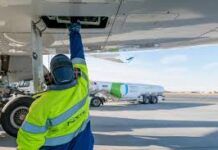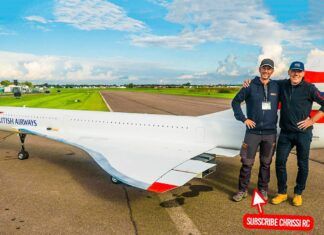The plodding search for EgyptAir 804, which went down in the eastern Mediterranean en route to Cairo on May 19, has again ignited the discussion about real-time transmission of critical flight parameters via satellite. In an age when the world is stitched together with numerous satellite systems, doesn’t relying on ancient flight and voice data recorders seem utterly backward?
Perhaps, but there’s also this reality: Real-time data monitoring of everything flight recorders store is still not practical nor would it impact system safety in any broad way sufficient to justify the cost. The reason for that is despite AF447, MH370 and now EgyptAir 804, the number of accidents or incidents in which flight recorders are difficult to access is still quite small in the overall scheme of things. Overall system safety is described by a torrent of data and a couple of flight recorders resting in two miles of salt water represents but a trickle of the total. That’s why, says a friend of mine in the accident investigation business, accident agencies aren’t too spun up about real-time monitoring as a tool to move the safety needle. That fruit is at the very top of the tree.
That’s not to say there isn’t a valid argument for real-time data, however, but it’s economic, not safety-related. A company called Star Navigation is making just that pitch for a system it’s been working on for more than a decade and has now developed for STC-based installation. The Star ADS system is essentially a smart box installed in the airplane that taps into the various data busses—the flight recorders, the ADAHRS system, the engine and electric busses, and so on. It’s highly customizable to the airline’s requirements, but it can be set up to monitor all sorts of parameters and exceedances, such as over-rotation on takeoff, flap and gear overspeed, over-banking—the list is a long one.
For transmitting this data in areas where VHF or wireless links aren’t available, says company CEO Viraf Kapadia, the Star system uses the Iridium satellite phone network. How often it reports and what it reports is, again, something each airline can specify. Kapadia says it’s economically unrealistic to attempt either real-time trend monitoring or full telemetry on oceanic airline flights but that the system can be programmed to push all the data through the pipeline that it can in the event that it senses an aircraft-threatening abnormal, such as a loss of pressurization, rapid altitude loss or fire. That’s the accident scenario that would apply to the EgyptAir 804 loss. Quite a bit of data could have been reported, not the least of which is actual position, before the airplane disappeared. Real-time DFDR/CVR telemetry is out of the question at the moment. And, in any case, investigators had radar data to work with in Flight 804. Even on AF447, the delay in retrieving the recorders had more to do with interagency squabling than it did not having a good position hack. I wouldn’t be surprised is that were also the case with EA804.
By airline avionics standards, the Star system is not expensive: about $60,000 installed on a one-off basis, but substantially less at fleet volumes. Operating costs are $13.50 per hour, plus $1250 a month for software and support. That’s about $4000 per month for an airliner turning 200 hours a month or maybe $114 per month per seat for a typical two-aisle airplane—fractions of a cent per seat mile. Still, airlines won’t buy it just to make CNN commenters happy or to assure the relatives if they lose one over the ocean.
Realizing this, Star is pitching the ADS system a cost-management tool, allowing airlines to accurately track maintenance issues and attend to them in the most efficient way. One of the big ones is OOOI for on-off, out-in times used to schedule heavy maintenance like D-checks. Kapadia says many airlines do this manually and inaccurately, giving away flight hours for too-early maintenance hours or grounding airplanes when the maintenance capacity isn’t available but the airplane is timed out. He argues that on this alone, the Star ADS could pay for itself in less than a year; the rest is just operating costs.
This idea is nothing new, by the way. Airbus, Boeing and the major aerospace engine makers have offered data reporting in various forms for years. Kapadia says the Star system is more all-inclusive and thus superior to what’s been offered before. I suppose the market will decide that.
So are we at the point that such systems should be required for oceanic routes? My vote is no. Even though it’s not that expensive, it does add cost for a service that’s unlikely to move the system safety needle much. You can keep adding mandatory safety systems forever, until the aircraft can’t get off the ground for the weight of them. But if a smart airline can make the economic case, why not? Pennies on seat-mile costs do matter on competitive routes and if Kapadia is right, the investment in systems like these might actually reduce them.

































